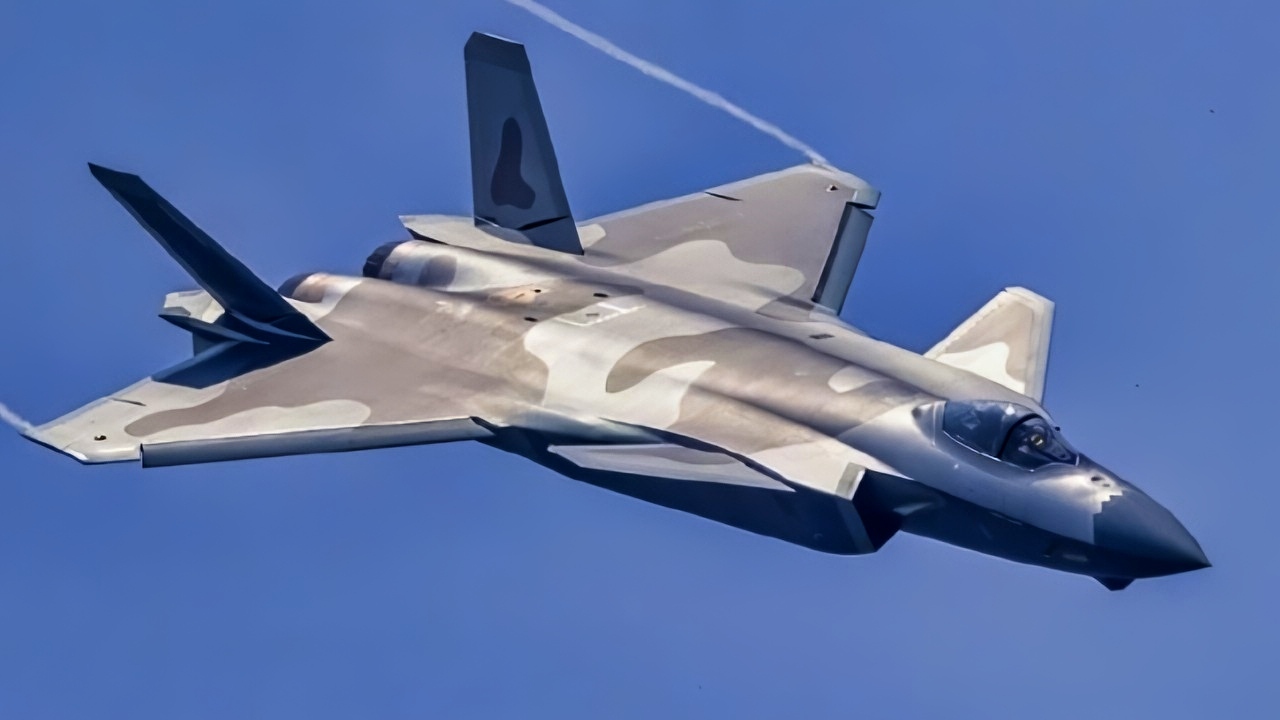Article Summary – China’s Two-Seat Stealth J-20S: Game Changer or Added Drag?
-China’s J-20S is the first twin-seat stealth fighter ever fielded (and something America doesn’t have at the moment)—signaling that Beijing prizes human judgment alongside AI speed.

J-20 Stealth Fighter in China. Image Credit: PLAAF.

China J-20A Fighter in the Sky. Image Credit: Creative Commons.
-Adding a second crew member brings weight and potential agility penalties.
-Still, it also unlocks new concepts: dedicated mission management, sensor fusion, long-range weapons control, and, crucially, manned-unmanned teaming.
-Think of the back-seater as a stealthy battle manager—tasked with running loyal-wingman drones, orchestrating targeting, and offloading pilot workload in high-G, jammed environments.
-The move mirrors the U.S. “human-machine team” approach (e.g., AI copilots) that keeps humans on the loop for lethal decisions.
-Net effect: a smarter, more flexible J-20 built for networked air wars.
China’s J-20S Stealth Fighter: What We Know and Think We Know
China’s publicly displayed J-20S is the first-ever twin-seat stealth aircraft, marking a historical milestone.
However, the addition of a second seat in the famous J-20 Mighty Dragon raises significant new questions about the People’s Republic of China’s (PRC) military Concepts of Operation.
The most immediate and self-evident observation is that the People’s Liberation Army Air Force (PLAAF) places a high value on human insight and decision-making in air combat.

J-20 with PL-15 Missile. Image Credit: Creative Commons.
Given the PRC’s likely emphasis on AI and the ability of an AI-empowered threat to defeat a human pilot in simulated dogfights, the addition of a second human to the J-20 may reveal something about Chinese thinking regarding AI versus human cognition in the realm of high-speed combat decision-making.
Clearly, the creation of the J-20S involved some trade-offs, as a two-seat stealth fighter naturally weighs more and is likely to be less fast and maneuverable.
The second seat, however, might better enable high-speed command and control, weapons targeting, radar technological program, and threat tracking mission.
Chinese View on AI
Knowing how fast and how capable AI-empowered fighter jet operations are, why would the PLAAF add a second human to its stealth fighter?
PLA decision-makers may share a view similar to that of the United States regarding fully autonomous AI-driven operations.
The Pentagon believes that the optimal approach is to blend the two through a “human-machine interface,” leveraging the optimal characteristics of each and combining them to support one another.
This approach suggests that the PLAAF, like the Pentagon, believes there are attributes and characteristics unique to human cognition and consciousness that mathematically generated algorithms cannot replicate.
It would be accurate to say that this is the prevailing viewpoint at the Pentagon, meaning that weapons developers do not support the use of AI-enabled autonomous lethal force. Instead, combat effectiveness is optimized when AI-enabled computing and human decision-making faculties operate in close coordination with one another.
AI-enabled Copilot
The US Air Force Research Laboratory has taken this man-machine blending to a new level with an experimental program designed to optimize the best combination of human and AI-empowered capabilities by placing an AI-copilot in a fighter jet to support a human pilot.
The concept is to reduce the cognitive load on a pilot by automating many of the procedural functions with a high-speed, AI-enabled computer that supports a human decision maker.
The AI copilot used for the AFRL experiment was called Artuu, and the service aimed to leverage lessons learned from the test operations.
What then are the advantages of a twin-seat J-20?
The first and most pressing of which would seem to pertain to drone controls, manned-unmanned teaming, and the use of a loyal wingman drone.
This means the two-seat stealth fighter could operate like a small, fast, and stealthy flying command and control hub, conducting targeting and maintaining multi-domain battlefield awareness through the operation of drones.
About the Author: Kris Osborn, Warrior Maven President
Kris Osborn is the President of Warrior Maven – Center for Military Modernization. Osborn previously served at the Pentagon as a highly qualified expert in the Office of the Assistant Secretary of the Army—Acquisition, Logistics & Technology. Osborn has also worked as an anchor and on-air military specialist at national TV networks. He has appeared as a guest military expert on Fox News, MSNBC, The Military Channel, and The History Channel. He also has a Masters Degree in Comparative Literature from Columbia University.
More Military
Thrust Vectoring 101: The Jet Trick That Bends Physics—and Dogfights
The Big F-20 Tigershark Fighter Program Mistake Still Stings
2025: The Year America and Venezuela Go to War?
Forget China’s J-50: U.S. 6th-Generation NGAD Fighters Flew Back in 2019










